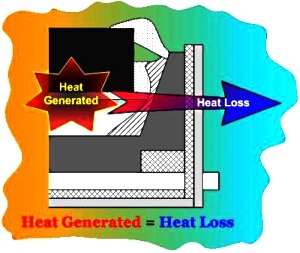Energy Saving
The price of power is the most important differentiating factor of aluminium production costs internationally. Consequently, the availability of energy at a competitive price is a critical strategic advantage. Through ongoing fundamental research on inert anodes, and more efficient electrolytic cell technology, we hope to bring about a successful breakthrough in reducing energy consumption, and thus minimising the impact of escalating power costs.
The dominant strategy for raising metal production rates in the primary aluminium industry, particularly among emerging markets, is to increase cell amperage. This requires the removal of excessive heat from the cell through modified cell design, revising operating parameters, or using forced cooling methods. These actions adversely affect the cell thermal balance and cell life, and may also increase emissions of fluoride (HF) and other harmful particles.
Heat balance is a critical operating condition to ensure health of the cell

LMRC conducts research to help industry reduce costs through employing best practice, deploying new technologies, and increasing the level of heat recycling. Studies in new technology to save energy includes:
- The implementation of Shell Heat Exchanger technology in high amperage pots
- Sidewall heat flow, pot shell temperature and damage surveys to characterise the heat balance and amperage capability
- Heat Recovery from sidewall and top waste heat collection; using heat exchangers and CFD design of ventilation systems
- New cover materials and cathode design to increase current efficiency and prevent thermal instability in the cell.
- The Centre is looking at a chloride chemistry route to bypass the problems of the carbothermic route by developing new chemistry to crack this old chestnut.